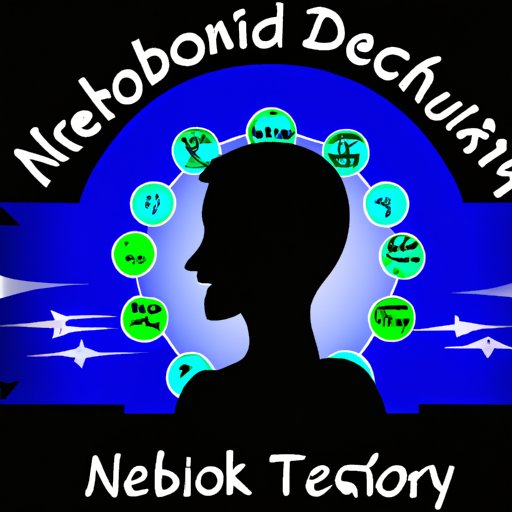Introduction
Neurofeedback is a form of therapy that uses technology to monitor and improve brain activity. It has become increasingly popular in recent years as an effective treatment for various mental health conditions, such as anxiety, depression, attention deficit hyperactivity disorder (ADHD), and post-traumatic stress disorder (PTSD). This article will explore the science behind neurofeedback and how it is used to improve mental health.
Exploring the Science Behind Neurofeedback
Neurofeedback, also known as EEG biofeedback, is a type of therapy that uses real-time displays of brain activity to teach people to control their own brainwaves. It is based on the concept that the brain is plastic and can be trained to change its patterns of activity to improve mental health and functioning. The goal of neurofeedback is to help people gain greater control over their own thoughts and emotions.
What is neurofeedback? Neurofeedback is a type of biofeedback that uses electroencephalography (EEG) to measure electrical activity in the brain. EEGs measure the electrical signals produced by neurons when they communicate with each other. These signals are then used to create a “map” of the brain’s activity, which can be used to identify areas of the brain that are not functioning optimally. By providing feedback about these areas, neurofeedback can help people learn to regulate their own brainwave activity.
How does it work? Neurofeedback involves attaching electrodes to the scalp and recording the electrical signals from the brain. These recordings are then fed into a computer, which uses them to generate visual or auditory feedback. People are taught to use this feedback to control their own brainwaves. For instance, if a person is feeling anxious or stressed, they may be taught to reduce their brainwave activity in the areas associated with those feelings. With practice, people can learn to regulate their own brainwaves, which can lead to improved mental health.

How Neurofeedback is Used to Improve Mental Health
Neurofeedback has been found to be an effective treatment for a variety of mental health conditions, including anxiety, depression, ADHD, and PTSD. In the case of anxiety and depression, neurofeedback can help people learn to regulate their own brainwaves in order to reduce their symptoms. For ADHD, neurofeedback can help people learn to focus their attention and improve their concentration. For PTSD, neurofeedback can help people process traumatic memories in a more healthy way.

Examining the Benefits of Neurofeedback Therapy
Neurofeedback has been found to have many benefits, including improved focus and concentration, reduced stress levels, and improved sleep quality. It can also help people to better manage their emotions, leading to improved mood and overall wellbeing. Neurofeedback has also been found to be helpful in treating chronic pain, as well as other physical symptoms associated with mental health conditions.

An Overview of Neurofeedback Technology
Neurofeedback technology is typically composed of two main components: the EEG sensors and the software. EEG sensors are attached to the scalp to record the electrical signals from the brain, while the software is used to analyze the data and generate visual or auditory feedback. There are several different types of neurofeedback equipment available, ranging from simple desktop setups to more sophisticated systems. Each type of system has its own advantages and disadvantages.
The most common type of neurofeedback equipment is the electroencephalograph (EEG). This type of device measures electrical activity in the brain and provides feedback in the form of a graph or chart. Other types of neurofeedback equipment include heart rate monitors, galvanic skin response (GSR) devices, and eye tracking devices. Each of these devices works in slightly different ways, but all provide valuable information about brain activity.
Investigating the Role of Neurofeedback in Treating Mental Illness
Neurofeedback can be an effective tool in treating mental illness, but it is important to understand how it works and what its potential side effects may be. It is also important to remember that neurofeedback should always be used in conjunction with other forms of treatment, such as medication and psychotherapy. Neurofeedback can be a powerful tool for improving mental health, but it is not a cure-all.
How can neurofeedback help people with mental illness? Neurofeedback can help people learn to regulate their own brainwaves, which can lead to improved mental health and functioning. This can be particularly helpful for people with anxiety and depression, as it can help them to better manage their symptoms. Neurofeedback can also be helpful for people with ADHD and PTSD, as it can help them to control their attention and improve their ability to process traumatic memories.
What are the potential side effects of neurofeedback therapy? While neurofeedback is generally considered safe, there are some potential side effects that should be taken into account. These include headaches, fatigue, dizziness, nausea, insomnia, and increased anxiety. It is important to speak to a doctor before beginning any form of neurofeedback therapy to ensure that it is appropriate for you.
Conclusion
Neurofeedback can be a powerful tool for improving mental health and functioning. It is based on the concept that the brain is plastic and can be trained to change its patterns of activity. Neurofeedback has been found to be an effective treatment for various mental health conditions, including anxiety, depression, ADHD, and PTSD. It can also help people learn to regulate their own brainwaves, which can lead to improved focus and concentration, reduced stress levels, and improved sleep quality. However, it is important to remember that neurofeedback should always be used in conjunction with other forms of treatment, such as medication and psychotherapy.
(Note: Is this article not meeting your expectations? Do you have knowledge or insights to share? Unlock new opportunities and expand your reach by joining our authors team. Click Registration to join us and share your expertise with our readers.)
